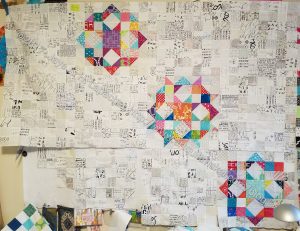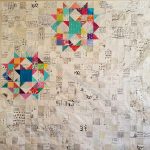 Quilt As-You-Go Made Modern: Fresh Techniques for Busy Quilters by Jera Brandvig
Quilt As-You-Go Made Modern: Fresh Techniques for Busy Quilters by Jera Brandvig
I bought this book at Back Porch Fabrics in Pacific Grove, California back in November when Friend Julie, Mom and I did our mini-shop hop. The publisher should pay Gail at Back Porch Quilts to sell this book, because I would never have bought it without her enthusiastic sales pitch. After watching her do a brief demo, I was convinced that this book would solve all of my quilting problems. I think I probably need to take a class from Gail with regard to this book, because my efforts did not go as well or as easily as advertised.
The book starts out with a Table of Contents that tells the reader the book has 30+ pages of instructions and 13 projects. The cover advertises an additional 25 bonus ideas.
Jera Brandvig uses the Introduction to give the advantages of QAYG (pg.7), but also to bash “traditional quilting.”(pg.6). She talks about what a hassle it is cut precision pieces. It gives some idea on why the author started using this technique. She calls Quilt-As-You-Go (QAYG) a “…fresh, fun and simpler-than-it sounds technique.” (pg.5). There is nothing about where she heard about it. There is a perfect place between the first and second paragraphs where she could tell us, but that information is obviously missing. Even though I know better, I was left with the impression that Brandvig herself thought up the technique.
The book has a list of supplies, (pg.9-11) which includes some tips such as ‘If you do have to stash your mat when it’s not in use, be sure to keep it flat against the wall – or under your bed – so it doesn’t develop wobbles.” (pg.9). Aside from the word ‘wobbles’, this statement is one that makes this a beginner friendly book. It goes a step further by including such useful charts as “Planning Your Quilt Size” (pg.14) and “Not Sure How Much Batting Yardage to Buy”(pg.15).
The chapter called “Quilt As You Go Technique” (pg.17) starts the how-to section. The first block exercise has the reader making a log cabin style block and quilting each fabric after it is added (pg.18-19). There is no mention of backing and it becomes clear later (pg.20) that backing isn’t used at this stage. The author also give guidelines that include a very obvious ‘don’t’ (pg.21).
Jera Brandvig gives some alternatives for quilting the blocks (pg.24-25) if the reader did not quilt each patch as described in the log cabin example (pg.18-21).
We finally get to the assembly of the blocks, which is the part that gave me fits (pg.28-) when I was doing this technique on my own. Brandvig details the two ways in which the blocks can be assembled (pg.28-31). The first method, sewing the blocks together directly, is the one I thought would be easiest. I don’t like the method using joining strips (pg.29), though it does have it uses.
Ms. Brandvig expands the options by including a section on mixing in “traditional” block patterns with QAYG methods (pg.32-35). She explains an additional four different methods. This is one of the expansions that make this an interesting book. She doesn’t just stick to a couple of methods. She thinks beyond the basics.
I wondered, after reading the how-to section, whether it was really possible to provide a quilt pattern. The author says at the beginning of the project sections that it is difficult to have precise patterns, a statement which I applaud. She tries to alleviate any perceived problems this might cause by giving the finished quilt size, the finished block size and the trimmed block size (example pg.38). The author refers frequently to the how-to section in each of the project directions rather than repeating information. She includes page numbers, which makes it easier to flip back and forth. The patterns are on the long side compared with other books with the same sort of designs. They include a lot of photos and some variations! Yay!
Most of the patterns use variations on strip quiltmaking. I like the colors and style of Rainy Days (pg.44-47). Emerald City makes stars (pg.85) and has lozenge variation (pg.84). Some of the layouts such as Cascade Range (pg.91), are clever and relieve the monotony of the strips. Portage Bay (pg.92-95) is built on one huge piece of batting, which could turn into a quick baby quilt. Once you are done piecing, there are no blocks to put together. With some more quilting, you have a quilt top.
Techniques for finishing the quilts come at the end of the book (pg.102-109). This is where I had the most trouble with my project and felt the most resentful about the technique. Regardless of any advertisement, the quilt still needs a backing and the backing needs to be held on with quilting. Jera says “You work with small and manageable pieces, which means you can quilt more intricately without the physical strain and frustration of feeding a large quilt sandwich through a sewing machine”(pg.7). While most of the projects are on the baby-kid quilt size, the author does provide information about making larger quilts (pg.14). There seems to be a disconnect between the beginning and the end of the book.
In the section on finishing (pg.102-109) it is confirmed that we still have to baste the backing to the top (pg.103). The advantage presented is that the reader will need far fewer pins (pg.103). Brandvig writes that the quilt will only need minimal quilting since the blocks are already quilted. My experience, however, was that I had to add more quilting than I expected because of sagging/bagging fabric. The book shows a picture of the minimal quilting suggested (pg.103) and I don’t think it is enough. YMMV.
The book also includes comprehensive instructions on binding (pg.106-109), which can be used for other projects.
Back Porch Fabrics felt the need to add a sheet of notes to the books they sold. The notes seem to reorganize information already in the book into an easier to access manner. For the method where the blocks are sewn together directly, they also suggest sewing the blocks together with a 1/2″ seam allowance. I did this and found it to be a hassle because I couldn’t use my quarter inch foot.
I was kind of annoyed at the book before I wrote this review because of my experience. I felt that it did not live up to the its promise. I also get annoyed when no mention of the historical / previous efforts in the technique are mentioned. After writing the review, I want to try QAYG again, especially for charity quilts. The Charity Girls have a hard time getting quilts quilted and I really don’t want to add to their burden. This is also a good technique for using scraps. I’ll think about using this technique with the Solstice Parade pattern (pg.38-43) as it uses strips and I have a lot of strips in my scrap drawers. I think this technique has promise and I’d really like to make it work.
View all my reviews
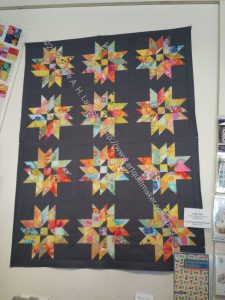

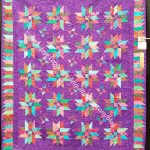
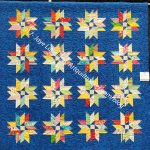
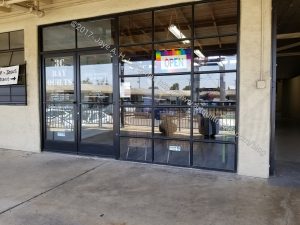
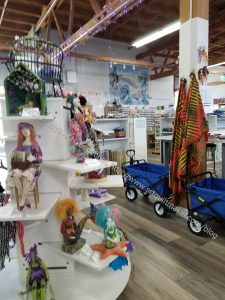
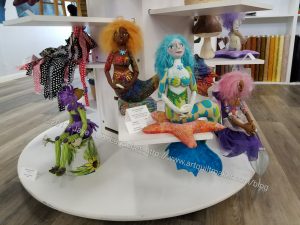
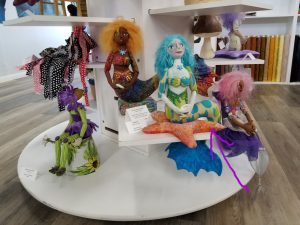
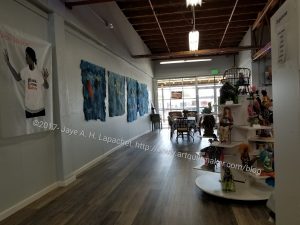
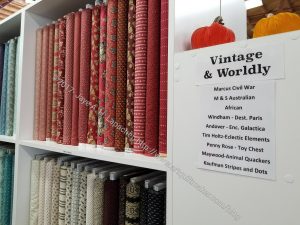
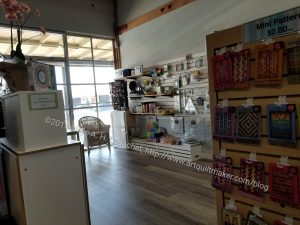
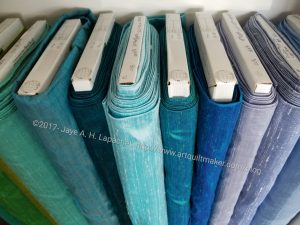
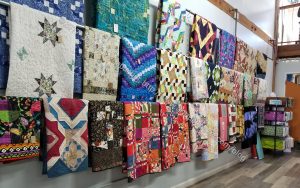

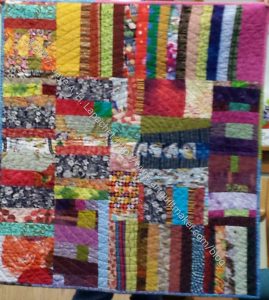
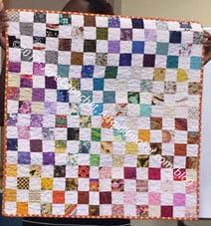
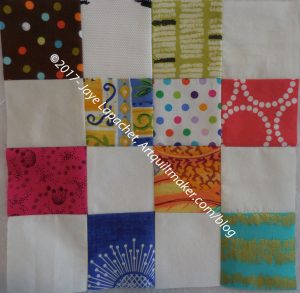
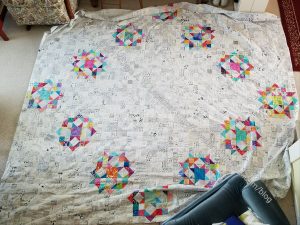
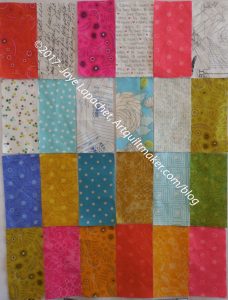

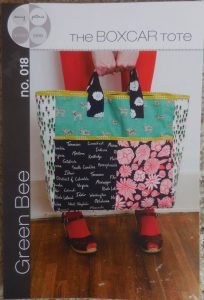
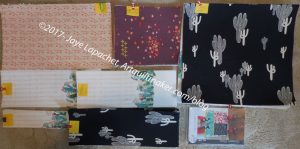
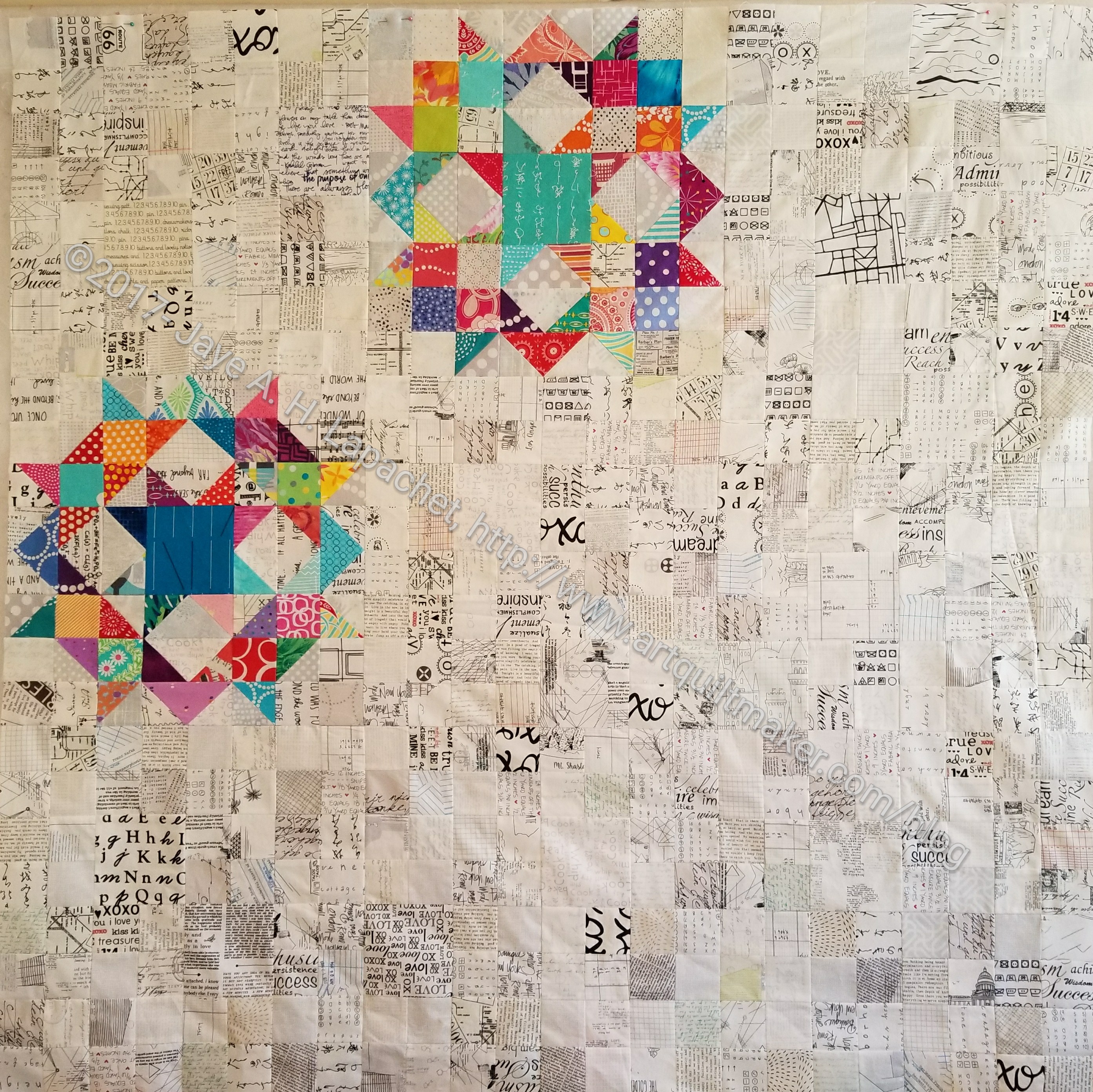 I decided to work on the Carpenter’s Wheel and move towards getting the top done. I have spent the past week making background blocks during every spare moment.
I decided to work on the Carpenter’s Wheel and move towards getting the top done. I have spent the past week making background blocks during every spare moment.